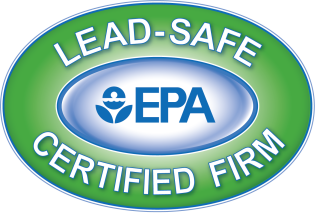Do you have black mold from a water leak? How do water leaks lead to mold? What if it’s just a tiny leak? Do you really need to call a professional to get rid of the mold? Come read and learn the top 10 things you need to know about black mold from a water leak. We answer all your questions and more!
DISCLAIMERS:
Blog information is NOT intended to provide or replace medical advice. NO information on this site should be used to diagnose, treat, prevent or cure any disease or condition.
*As an Amazon Associate we earn from qualifying purchases.
Suggestions for products to use are just that, suggestions. You know yourself and your home best. Please do your own research on any product you use in your home or on your skin, and learn all the facts for yourself. Thank you.
WHY WATER LEAKS CAN LEAD TO BLACK MOLD
1. How Mold Grows
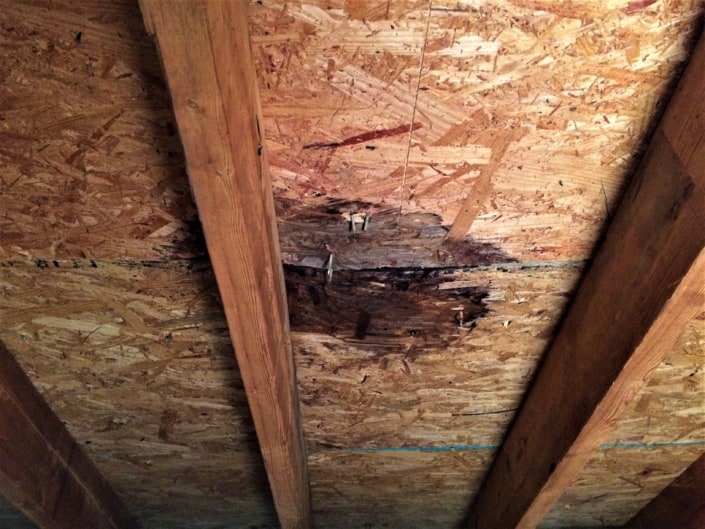
Molds grow from microscopic spores that are universal. You can find molds on every continent, and in almost every type of environment. Mold needs 4 things to grow: oxygen, moisture, a food source, and warmth. The most unusual thing about mold is that molds grow inside of their food sources. They can penetrate deeply into drywall, carpets, underneath kitchen and bathroom sinks, etc.
There is only one thing you can reasonably control when it comes to mold, and that is the moisture level. When water invades your home, things like drywall, wood, carpet, etc. are an excellent food source for mold.
Mold can start growing in less than 48 hours! Water behind baseboards and cabinets, wet carpet tack strips, and other hard to reach areas are a ticking mold time bomb. Even with fans going and mopping up the water, it may not be enough to prevent mold growth.
2. Types of Leaks
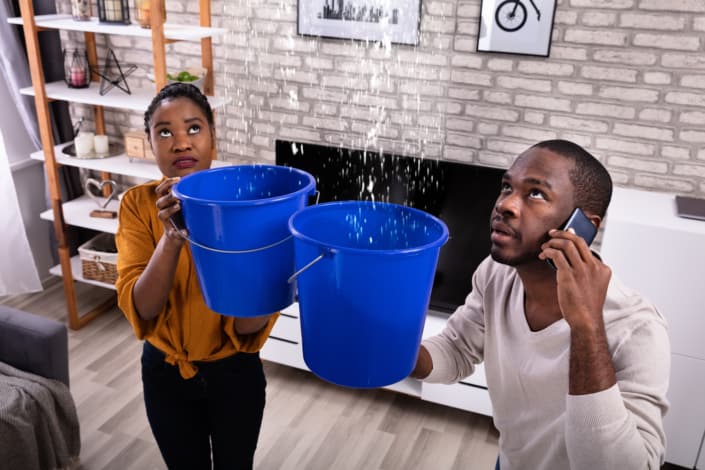
Dramatic flooding is of course a major problem, but usually people notice when pipes have burst or flood waters have invaded their homes. These are dramatic events!
However, tiny cracks in pipes and hoses, and clogs in drains can become a nightmare if forgotten long enough. Tiny leaks over a long period of time can cause as much or more damage than flooding water type events. Because they go unnoticed, tiny leaks can cause more damage than most people realize.
The main sources for mold growth in homes are water leaks from faucets, roofs, hot water heaters, ground water damage and even sewer backup. Find the water leaks and find the source of the problem.
3. How to Turn Off Your Water
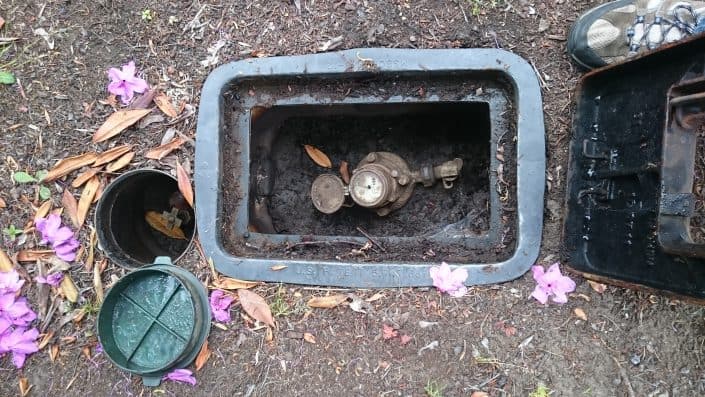
Hopefully you know how to turn off your water. If not, click here quickly! Our post can help you turn off your water ASAP!
4. BLACK MOLD – SOMETHING OF A MISNOMER
All molds have the potential to cause irritation and allergy symptoms. However, some molds can also cause much more dangerous health problems. Some molds, but not all, produce toxins (called mycotoxins). Toxic molds can cause health problems ranging from poisoning to cancer. Not all molds are toxic, but many are. The thing is… dangerous and toxic mold is not just black, it can be many different colors. Toxic molds can appear to be green, yellow, brown, and black.
So, where is the line between an allergic mold and a toxic mold? That line is defined by something called a mycotoxin, and is NOT defined by color.

Mycotoxins, literally ‘fungus poison’ in Latin, are secondary metabolites that can be produced by molds, and are not living organisms. Mycotoxins are a byproduct of mold. Not all mold spores produce mycotoxins, but some do. So the molds that produce mycotoxins are the ones that could be categorized as toxic or poisonous, no matter what color they are.
Mycotoxins are chemical substances that can cause many health problems ranging from mild to severe. Even if you are not allergic to mold, you can be affected by mycotoxins.
5. IS MOLD A HEALTH PROBLEM?
In one word… Yes.
Mold is an insidious, invisible predator in your home. It hides in places no one ever thinks to look like under cabinets, in crawl spaces, and behind furniture. People may spend weeks, months, and even years fighting illness, and never know what they are really fighting…mold. Many of our customers find us after a recommendation from their doctor, that they may in fact have a mold problem, and not just an illness.
Mold is most often associated with allergies, but mold is much more menacing than people know. While all molds have the potential to cause irritation and allergy symptoms, molds can also cause much more dangerous health problems including: fungal poisoning and mental health problems.
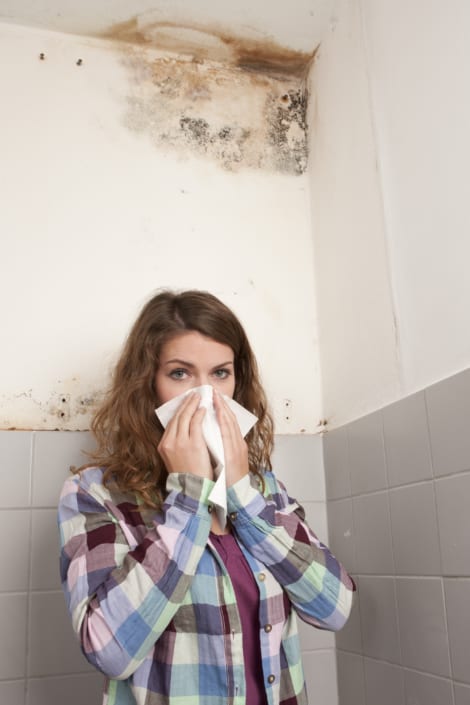
Even for people in good health, exposure to large amounts of mycotoxins and molds can overwhelm the immune system and cause symptoms of poisoning. Mycotoxins can be especially dangerous for people with compromised immune systems. Our post Mold Exposure Symptoms has all the details.
To learn more about how mold can affect mental health check out our articles: Mold and Mycotoxins: Effects on the Brain and Nervous System in Adults and Effects of Mold on Children’s Health.
Mold Hurts Pets, too!
Just like humans, pets can be affected negatively by mold. Mold can cause health problems for pets similar to those faced by humans. However, since animals are usually smaller than people, it takes smaller amounts of mold to have negative effects on them.
To learn more about pets and mold check out our post: 10 Things You Most Likely Didn’t Know about Mold and Pets.
6. CLEANING BLACK MOLD FROM WATER LEAKS: DIY VS. PROFESSIONAL

OK, so I have mold. What now? Customers often ask us, “Can I clean the mold myself or do I need a professional?” Our answer depends several factors including:
- how extensive the mold problem is
- what building materials, furnishings, and belongings are affected
- where the mold is located
- whether or not you mind being in confined spaces such as your crawlspace, basement, or attic
If you’re familiar with our blog, you know that the first thing to do when cleaning mold is to fix the moisture problem that led to the mold growth. Until you fix the moisture problem, mold will continue to grow and spread.
Mold is great at hiding in hard to detect locations such as in drywall and insulation. There is a good chance the mold problem is more than an isolated issue, if the area of mold covers more than about 10 square feet. If you smell a musty odor in your home you can’t identify, or have health problems associated with mold, it’s time to call in the professionals.
If the area of mold is less than 10 square feet, you may be able to handle it yourself. To get all the details check out our post: Cleaning Mold: DIY vs. Professional.
7. NOT ALL ‘MOLD INSPECTIONS’ ARE CREATED EQUAL
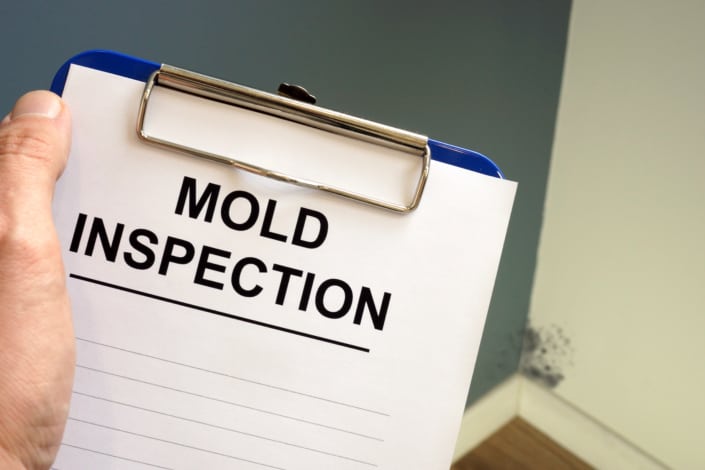
OK, so you had a leak and you suspect mold. You’re ready to get some ‘professional help’ but how do you know who to hire? Have you ever had mold removed from your home? Do you know what to ask mold removal companies? What do they really do?
As a mold removal company, we know what you should expect and what the industry standards should be. Some of our competitors offer “free” mold inspections. Which basically means that the inspector shows up and hands over a price to fix a symptom, without truly knowing the nature of the problem. The primary reason that we charge for our mold inspections is the time and resources that go into each one.
If you think you might have a mold problem, you’re far better off with a thorough inspection like ours. We analyze the symptoms to determine the root cause of your problem, and will only recommend solutions that will solve the actual problem.
Especially if you live outside our service area, check out our post: How to Choose the Best Mold Removal Company. We let you know what you should expect and what the industry standards should be. If the company you interview doesn’t know the answer to the questions in our article, you don’t want to hire them!
8. PREVENTING FUTURE LEAKS AND FUTURE MOLD GROWTH

It’s easy to take care of mold and mildew as a homeowner, but it’s also a good idea to know when to call in the pros. You should be able to take care of mildew yourself, but if it keeps coming back, or is causing health problems for your family, you may want to call in the pros. It might just be mold, not mildew.
Mold is great at hiding in hard to detect locations such as in drywall, under sinks, and in carpet. If the area of mold covers more than about 10 square feet, there is a good chance the mold problem is more than an isolated issue. If you smell a musty odor in your home you can’t identify, or have health problems associated with mold, it’s time to call in the professionals.
Especially if you don’t live in our service area, check out our post: How to Choose the ‘Best’ Black Mold Removal Company. We help you know all the questions to ask and all the answers!
10. THE BRANCH DIFFERENCE

At Branch Environmental, we analyze the symptoms to determine the root cause of your problem. We see each mold inspection as an in-depth investigation, not an opportunity to hand over a guess-based estimate of work. If you think you may need a mold inspection, get in touch with us, and we’ll get down to the source.
Call Branch Environmental. We’re experts not only at mold removal, but at determining and remediating the underlying causes. From hidden mold sources to major contaminants, we can identify exactly what is going on in your home and rid it of environmental toxins, often for good.

